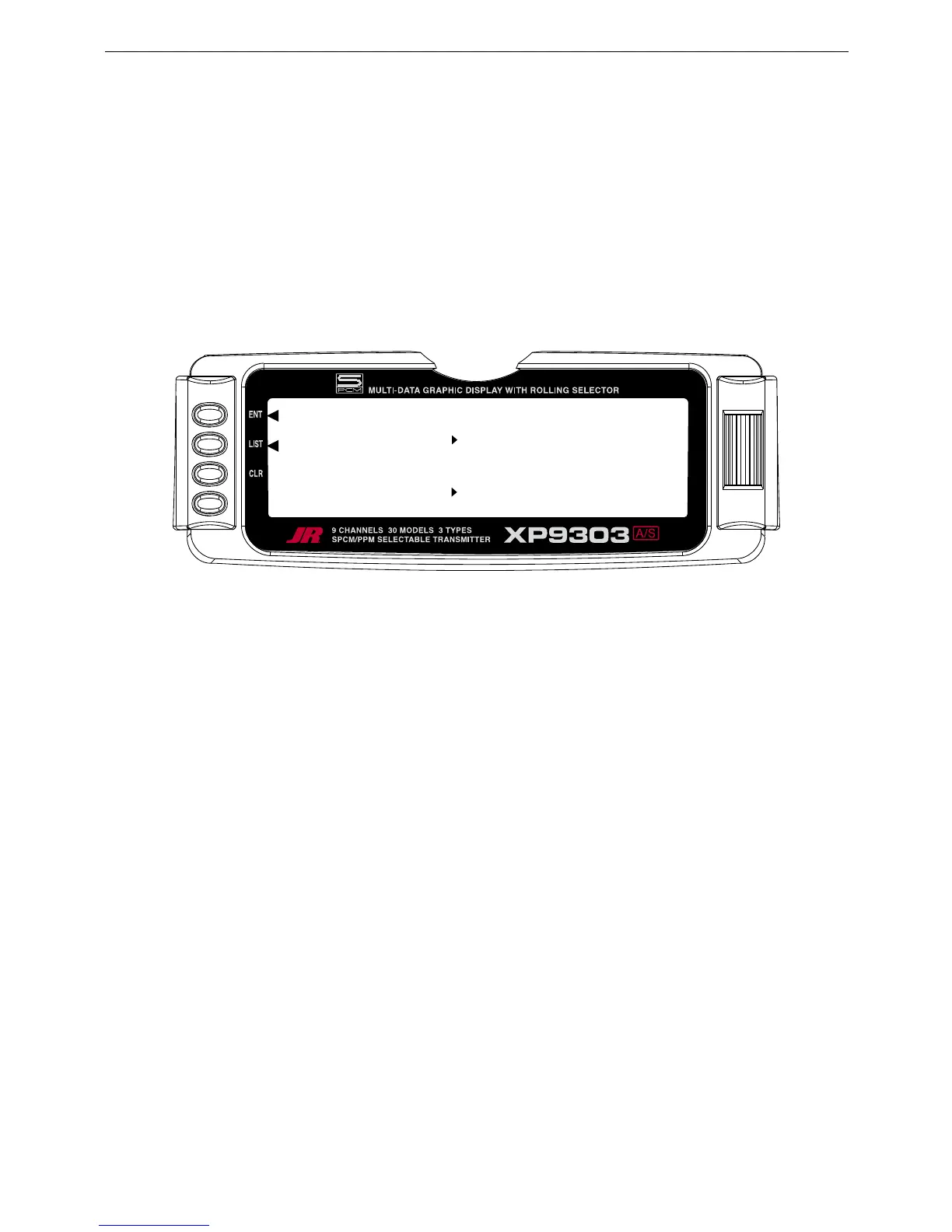FIXED GYRO GAIN (Gyro System)
A36
Fixed Gyro Gain does not use the Stick Override Gain
feature. Whichever of the 3 gains is presently selected
remains in effect and moving the control stick does not
affect the gain.
1. To access the GYRO System, highlight and select
GYRO SYS. in the FUNC.LIST.
AUX2 gain settings appear in the top half of the display
while the AUX3 settings appear in the lower half of
the display. They will appear only if AUX2 and/or
AUX3 have been set to GYRO on the OUT line of the
Devic.SEL function.
2. Decide on which switch to use to control gyro gain.
The Flap switch and the AUX2 switch are the only 3-
position switches that can be used by the Gyro System.
One switch can be used to select the gain for both
gyros, or each gyro can use a different switch to select
the gain. Typically, one switch is used to control the
gain, even when 2 gyros are used.
Highlight and select AX2 SW or FLP SW next to AUX2
and AUX3 until the desired switch is displayed next to
each. The example below shows the AUX2 switch
selected for both gyros.
3. Each gyro has 3 possible gain settings. They are
labeled 0, 1, and 2 next to CEN on the display,
with a percentage next to each (CEN stands for gyro
gain when the control stick is at center – no stick
deflection). They correspond to the positions of a 3-
position switch where 0 represents the switch being in
the upper position; 1 represents the middle position;
and 2 represents the lower position. It is recommended
that the 0 position (upper switch position) for each
gyro be set to zero (0%) which allows the gyro to
be turned off in flight (very useful if a gyro suddenly
becomes overly-sensitive).
4. Use the Selector to highlight and select the number 0
position for each gyro and set the percentage to 0% if
not already at a 0% value.
5. Select the number 1 gain for each gyro and set it to
some moderate value. The example shows 50% gain
set for both gyros.
6. Select the number 2 gain for each gyro and set it to a
relatively high value. The example shows 85% gain set
for both gyros.
7. If Flight Modes have not been activated, skip to next
step below.
If Flight Modes have been activated in the Devic. SEL
function, a list of Flight Modes (FM0, FM1, FM2) is
displayed to the right of the display for each active Gyro.
The default setting for each Flight Mode is S, indicating
that the 3-position gyro switch will control the gyro gain
when in that Flight Mode. The S can be changed to
0, 1, or 2 to represent the gain values associated with the
positions of the 3-position switch. For example, if FM1 is
set to 0, then when in Flight Mode 1, the gain will be 0%
which corresponds to the gain of the upper position of
the 3-position switch. If FM1 is set to 1, the gain will be
50%, and if FM1 is set to 2, the gain will be 85% when in
Flight Mode 1.
Highlight and select each FM parameter and set it to S, 0,
1, or 2 to indicate if the Gyro switch will control gyro gain
while in that Flight Mode, or to assign one of the gains
to the flight Mode. The example above shows all Flight
Modes as deferring gyro gain control to the 3-position
gyro gain switch – in this case the AUX2 switch.
8. This completes the Fixed Gyro Gain setup. In the
example, the AUX2 switch is being used to select
the gain of both gyros at the same time. The upper
position of the switch selects 0%, essentially turning
the gyros off. The middle position selects 50% for both
gyros and the lower position selects 85% gain for both
gyros. The selected gain does not change when the
sticks are moved.
